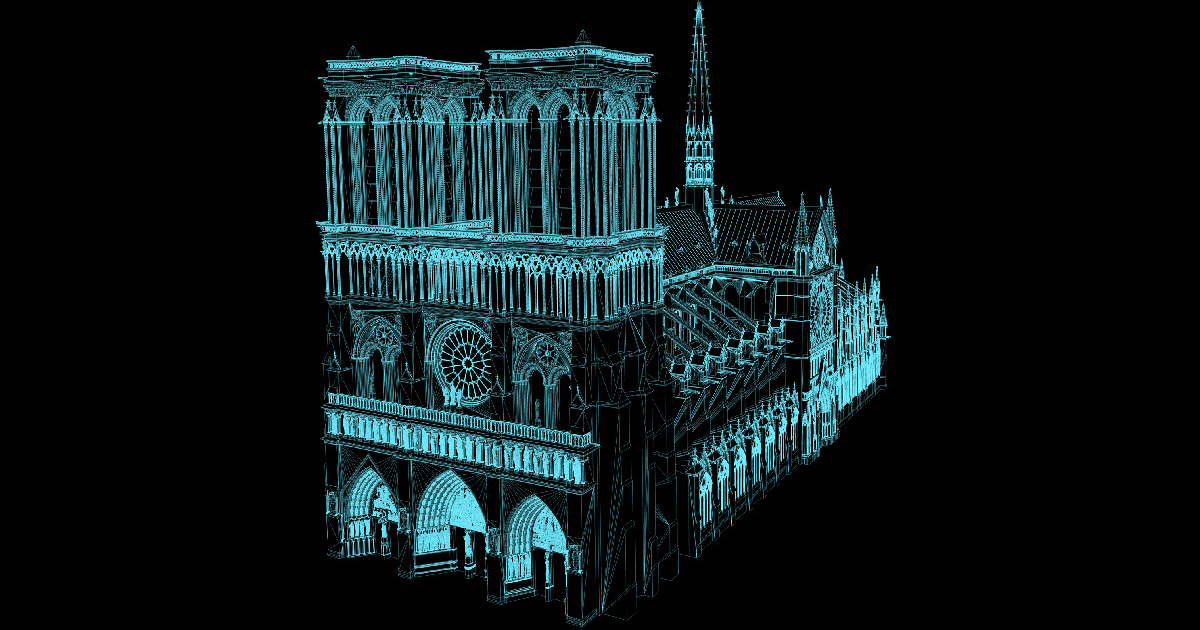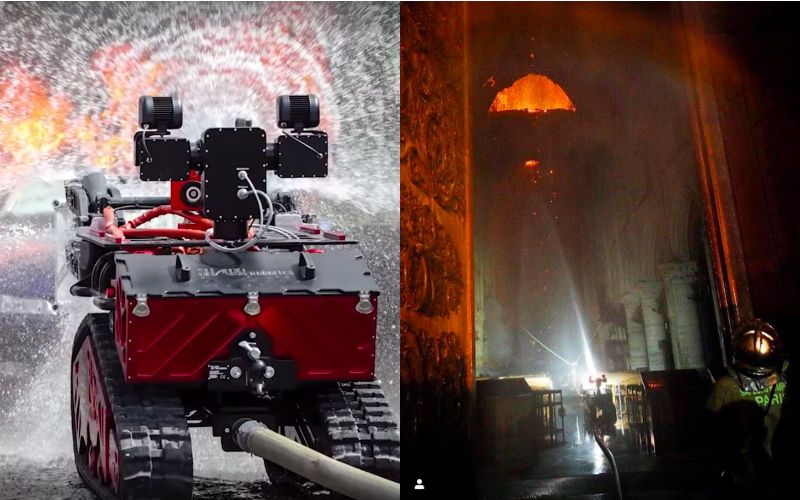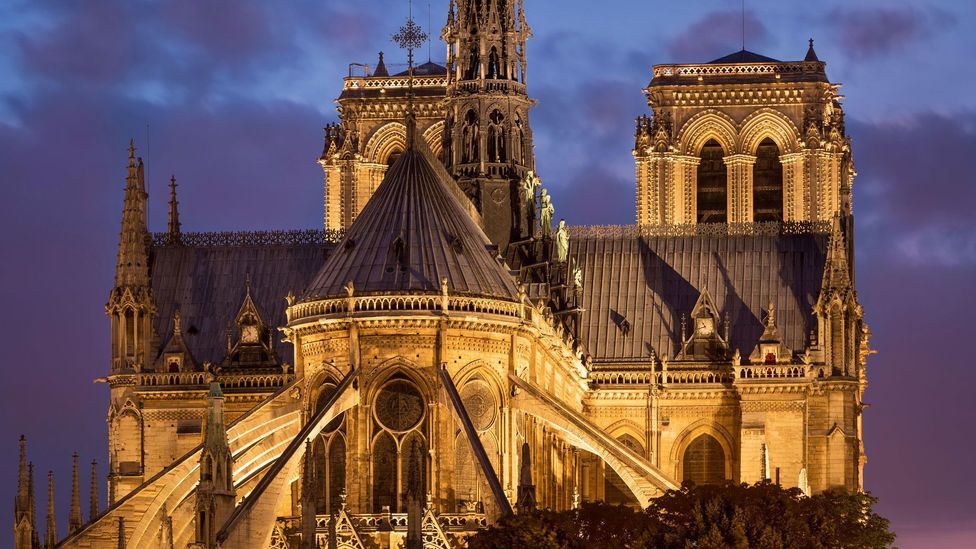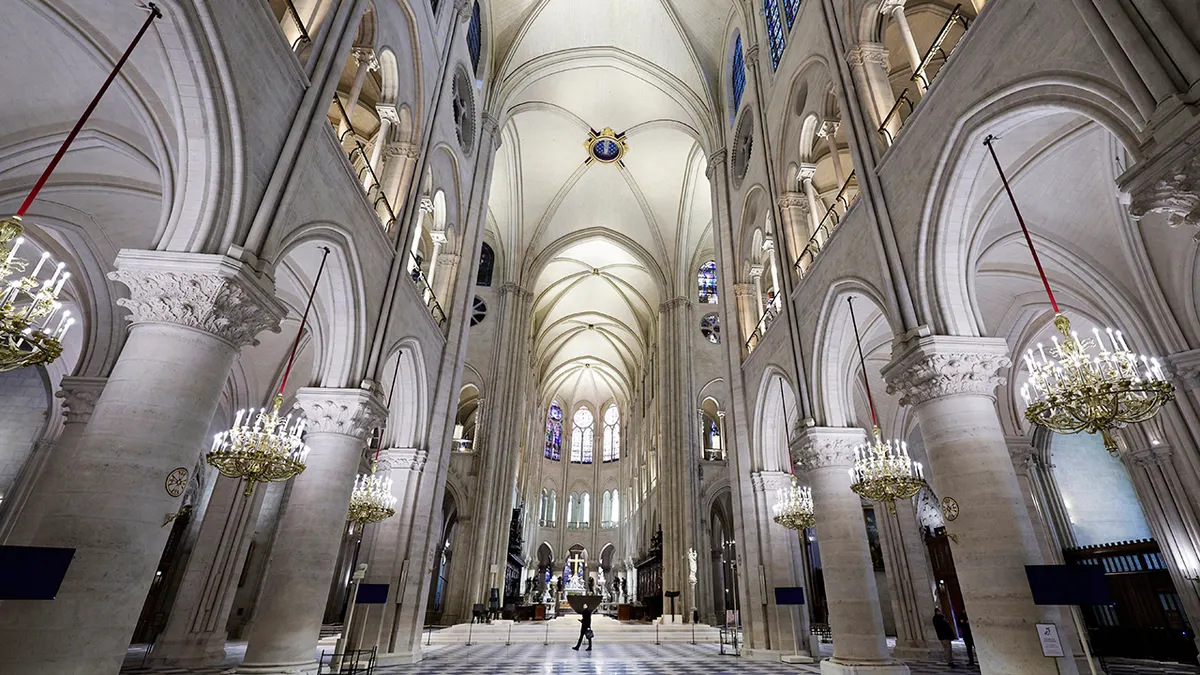The terrible fire that destroyed Notre Dame Cathedral in 2019 was a wake-up call, but it also showed us a new way to protect historic buildings. As the climate changes quickly, famous buildings that were intended to last through hundreds of years of mild weather are suddenly facing risks like never before. These mediaeval treasures are under attack from high heat, heavy rainfall, and increasing sea levels. Luckily, a new set of digital tools is coming out that will help keep youngsters safe. The continuous restoration of Notre Dame is testimony of this work. It shows how a digital-first approach can not only reconstruct the past but also protect it for the future.
 Notre-Dame de Paris on Fire, 2019. Photo: Shutterstock
Notre-Dame de Paris on Fire, 2019. Photo: Shutterstock
The Digital Blueprint: The Miracle of Data and 3D Scanning
When the Notre Dame spire fell, a lot of important information constituted the basis for the restoration. Thanks to the imaginative work of art historian Andrew Tallon, who had made a very accurate 3D digital model of the cathedral years before the fire using LiDAR (Light Detection and Ranging) technology. LiDAR sends out billions of laser pulses to measure distances with millimeter-level accuracy. This makes a “point cloud” that is a flawless digital copy of the real thing.
This digital blueprint changed everything. It gave architects, engineers and stonemasons the exact measurements and structural characteristics of the original building, which let them replicate lost parts with amazing accuracy. The reconstruction would have taken longer and been less certain without this data, which was based on old drawings and photos that couldn’t show the same degree of detail. The Notre Dame project has set a global standard. Many other ancient sites, like the Pyramids of Egypt and Machu Picchu, are also being digitally scanned as a way to protect them from future tragedies and the slow degradation caused by climate change.

Source: churchheritage.eu
From Plans to Digital Copies
The restoration of Notre Dame is the first time that a “digital twin” has been used in addition to a static 3D model. This isn’t simply a model; it’s a virtual copy of the cathedral that can change over time and get new data all the time. Think about how sensors built into the stone and wood would keep an eye on things like temperature, humidity, and stress on the structure. You may feed this constant stream of information into the digital twin so that experts can monitor how the building is reacting to its surroundings in real time.
This is a big deal for Gothic churches, which weren’t intended to handle the weather extremes we have today. A digital twin can show what might happen if summer got hotter, winter got wetter, or a sudden, strong storm hit. This lets restoration teams guess where problems might happen and fix them before they happen. For example, if sensors find that rising damp is an issue in a given part of the wall because of more rain, the digital twin might flag that region for quick repair work to stop more harm from happening in the future. This method changes conservation from a reactive to a proactive field of study.
 3-D laser scan of Notre Dame Cathedral. Andrew Tallon / https://news.nationalgeographic.com
3-D laser scan of Notre Dame Cathedral. Andrew Tallon / https://news.nationalgeographic.com
Using modern solutions to fight climate threats
Climate change threatens Gothic cathedrals in several ways. The limestone, mortar, and wood that make them up are all weak.
- More rain and flooding: Drainage systems that have been in place for hundreds of years can be overwhelmed by wetter winters. The moisture that comes from this can make stone crumble, mould and rot wood, and make foundations less stable.
- Extreme Temperatures: Hotter summers can make materials expand and contract more, which can cause cracks and make structures weaker. The same tremendous heat that caused the Notre Dame fire is also a danger to other wooden buildings.
- Storms that are getting worse: Stronger winds and more storms impose a lot of stress on flying buttresses, spires, and other fragile architectural features that were made for a different environment.
To overcome these problems, the Notre Dame restoration is adding modern features that can withstand climate change. This involves putting in new fire-suppression systems that employ mist to limit water damage and making the infrastructure stronger so it can endure more intense weather in the future. A landscape architect is even redesigning the area around the cathedral to add more green areas and a cooling water sheet. This will help make the micro-climate around the cathedral more stable and reduce the urban heat island effect.
 Since a fire 5 years ago, Notre Dame’s roof and spire have been reconstructed and its stonework meticulously cleaned.Christophe Petit Tesson/Abaca/Sipa via AP Images
Since a fire 5 years ago, Notre Dame’s roof and spire have been reconstructed and its stonework meticulously cleaned.Christophe Petit Tesson/Abaca/Sipa via AP Images
What AI and Robotics Do
The size and difficulty of the Notre Dame restoration also highlight how useful robots and AI can be. Before it was safe for anyone to go in, robots were sent in to sweep up debris, check the building’s structural stability, and get rid of melted lead. This not only sped up the cleanup, but it also kept personnel safe from dangerous situations.
In the future, AI might have an even bigger role to play. Think about an AI-powered system looking at the data from the cathedral’s digital twin and finding small signs of degradation that people might not see. It might estimate future maintenance needs with amazing precision, making the best use of resources and making sure the cathedral stays healthy for a long time. AI could also aid with the complicated logistics of the restoration by keeping track of the activities of thousands of engineers, artisans, and specialists.

Source: churchpop.com
A New Hope for Our Cultural Heritage
Notre Dame’s story is more than just about rebuilding after a fire; it’s also about being strong and coming up with new ideas. This is a great illustration of how technology can help us protect our shared heritage. We are not only rebuilding one monument; we are also creating a new way to protect cultural assets in a world that is always changing.

Source: bbc.com
The things that Notre Dame learnt will be very helpful for many other historic buildings that are also under risk from climate change, such the mediaeval churches in Europe and the ancient temples in Asia. The greatest way to make sure that these priceless artefacts last for centuries to come is to combine old-fashioned craftsmanship with new technology.
References
Inside the Notre Dame Cathedral Renovation Process: Preserving History and Heritage | illustrarch
How Did BIM Help Notre-Dame Rise from the Ashes? | ArchDaily
For more content like this CLICK HERE!!





